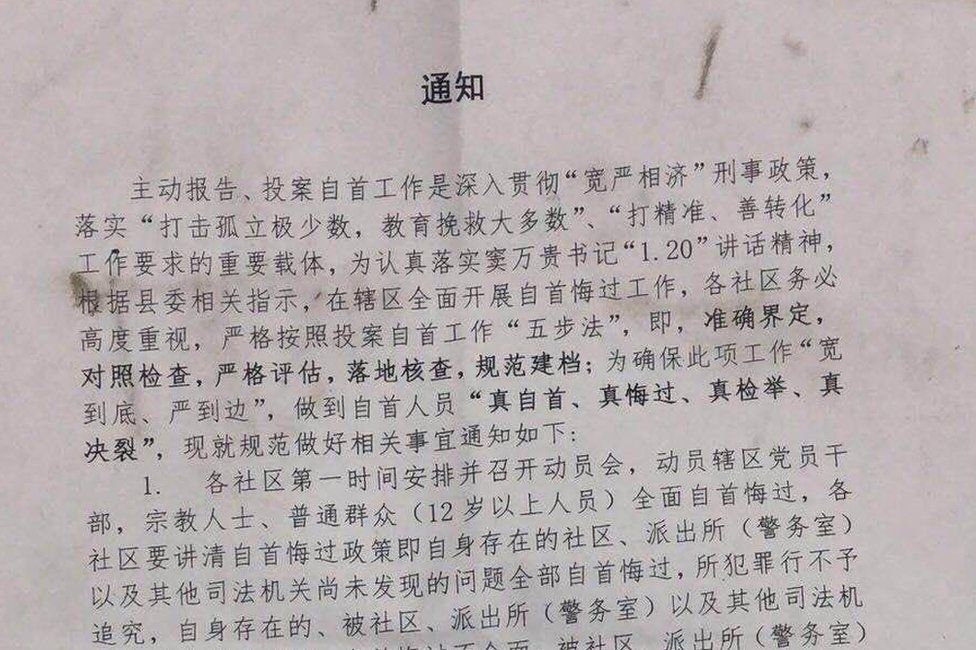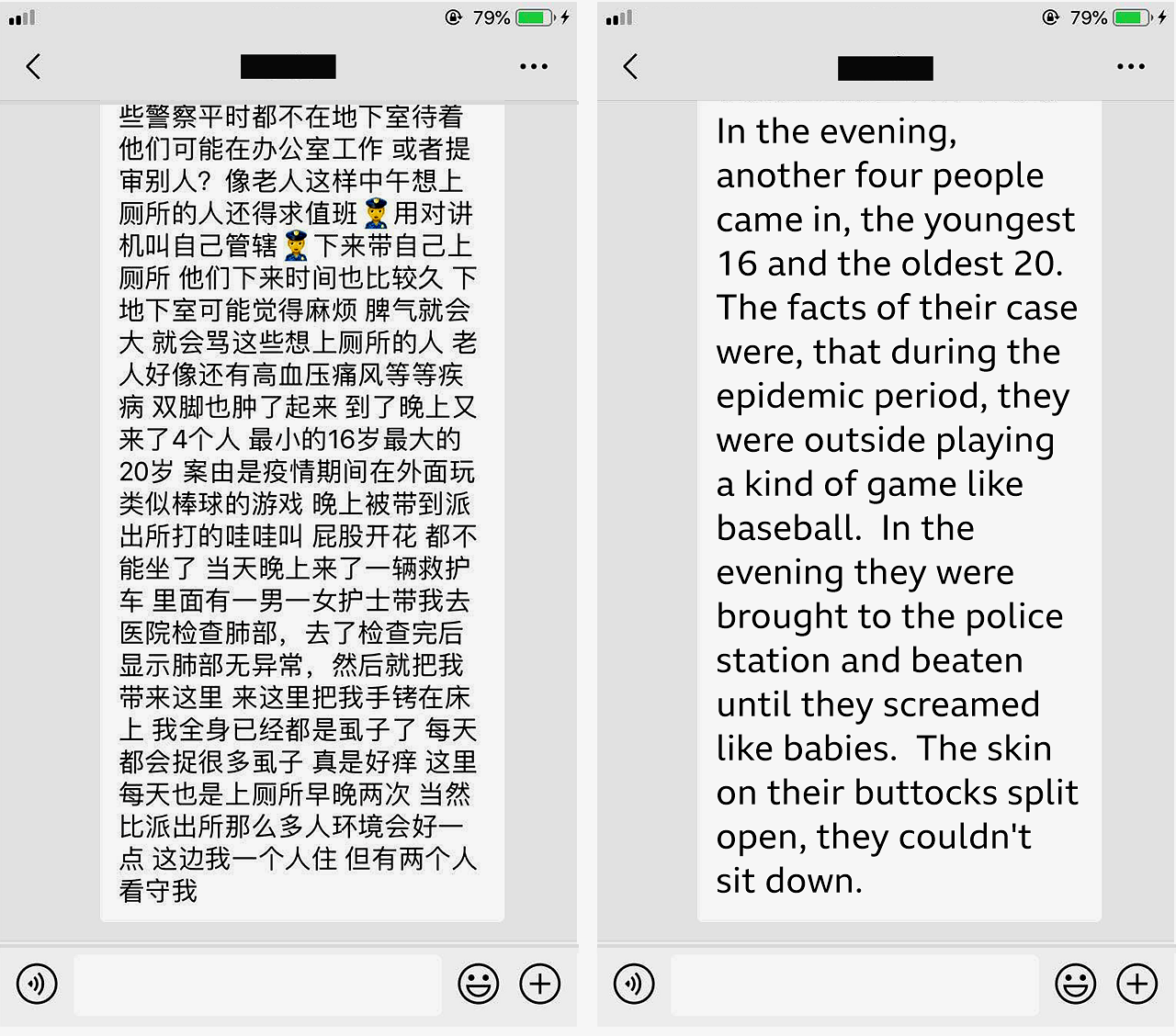China Uighurs: A model's video gives a rare glimpse inside internment
August 04, 2020As a model for the massive Chinese online retailer Taobao, the 31-year-old was well paid to flaunt his good looks in slick promotional videos for clothing brands.
But one video of Mr Ghappar is different. Instead of a glitzy studio or fashionable city street, the backdrop is a bare room with grubby walls and steel mesh on the window. And in place of the posing, Mr Ghappar sits silently with an anxious expression on his face.
Holding the camera with his right hand, he reveals his dirty clothes, his swollen ankles, and a set of handcuffs fixing his left wrist to the metal frame of the bed - the only piece of furniture in the room.
…
The video of Mr Ghappar, along with a number of accompanying text messages also passed to the BBC, together provide a chilling and extremely rare first-hand account of China’s highly secure and secretive detention system - sent directly from the inside.
In addition to the clear allegations of torture and abuse, Mr Ghappar’s account appears to provide evidence that, despite China’s insistence that most re-education camps have been closed, Uighurs are still being detained in significant numbers and held without charge.
It also contains new details about the huge psychological pressure placed on Uighur communities, including a document he photographed which calls on children as young as 13 to “repent and surrender”.
…
Merdan Ghappar’s text messages, said to have been sent from the same room as his self-shot video, paint an even more terrifying picture of his experience after arriving in Xinjiang.
Written via the Chinese social media app WeChat, he explains that he was first kept in a police jail in Kucha.
“I saw 50 to 60 people detained in a small room no bigger than 50 square metres, men on the right, women on the left,” he writes. “Everyone was wearing a so-called ‘four-piece-suit’, a black head sack, handcuffs, leg shackles and an iron chain connecting the cuffs to the shackles.”
Mr Ghappar was made to wear the device and, joining his fellow inmates in a caged-off area covering around two-thirds of the cell, he found there was no room to lie down and sleep.
“I lifted the sack on my head and told the police officer that the handcuffs were so tight they hurt my wrists,” he writes in one of the text messages.
“He shouted fiercely at me, saying ‘If you remove your hood again, I will beat you to death’. And after that I dared not to talk,” he adds.
“Dying here is the last thing I want.”
…
He writes about the constant sound of screaming, coming from elsewhere in the jail. “Interrogation rooms,” he suggested.
And he describes squalid and unsanitary conditions - inmates suffering from lice while sharing just a handful of plastic bowls and spoons between them all.
“Before eating, the police would ask people with infectious diseases to put their hands up and they’d be the last to eat,” he writes.
“But if you want to eat earlier, you can remain silent. It’s a moral issue, do you understand?”
Then, on 22 January, with China at the height of its coronavirus crisis, news of a massive, nationwide attempt to control the epidemic reached the prisoners.
Mr Ghappar’s account suggests the enforcement of quarantine rules were much stricter in Xinjiang than elsewhere. At one point, four young men, aged between 16 and 20, were brought into the cell.
“During the epidemic period they were found outside playing a kind of game like baseball,” he writes. “They were brought to the police station and beaten until they screamed like babies, the skin on their buttocks split open and they couldn’t sit down.”
The policemen began making all the prisoners wear masks, although they still had to remain hooded in the stuffy, over-crowded cell.
“A hood and a mask - there was even less air,” he writes.
…
When the officers later came around with thermometers, several inmates including Mr Ghappar, registered higher than the normal body temperature of 37C (98.6F).
Still wearing his “four-piece suit”, he was moved upstairs to another room where the guards kept the windows open at night, making the air so cold that he could not sleep.
There, he said, the sounds of torture were much clearer.
“One time I heard a man screaming from morning until evening,” he says.
A few days later, the prisoners were loaded onto minibuses and sent away to an unknown location. Mr Ghappar, who was suffering from a cold and with his nose running, was separated from the rest and taken to the facility seen in the video he sent - a place he described as an “epidemic control centre”. Once there, he was handcuffed to the bed.
“My whole body is covered in lice. Every day I catch them and pick them off from my body - it’s so itchy,” he writes.
…
After 18 days inside the police jail, he was suddenly and secretly in touch with the outside world.
For a few days he described his experiences. Then, suddenly, the messages stopped.
Nothing has been heard from Mr Ghappar since. The authorities have provided no formal notification of his whereabouts, nor any reason for his continued detention.



